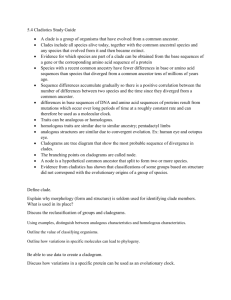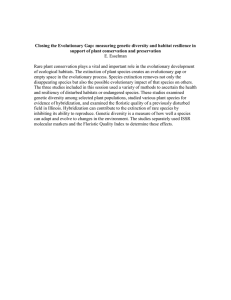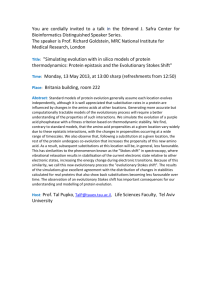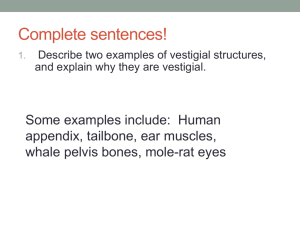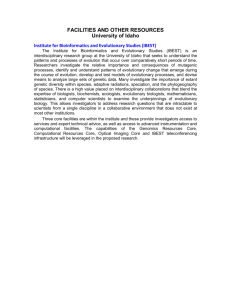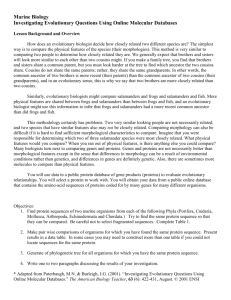Ecology Unit Outline - nnhsbiology
advertisement
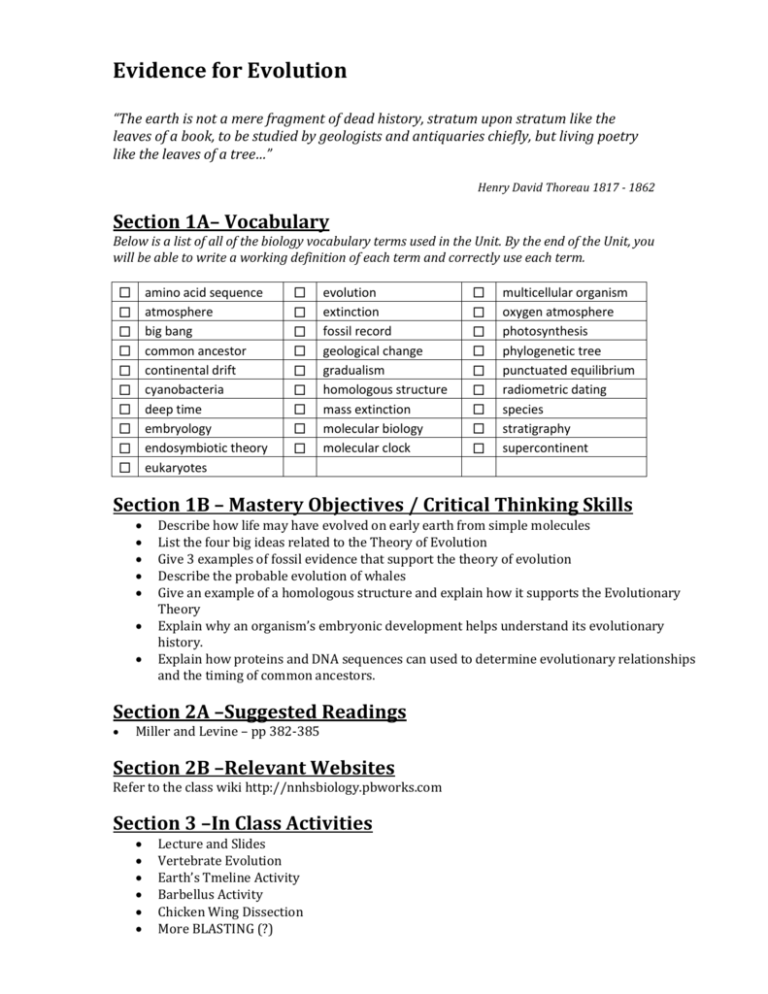
Evidence for Evolution “The earth is not a mere fragment of dead history, stratum upon stratum like the leaves of a book, to be studied by geologists and antiquaries chiefly, but living poetry like the leaves of a tree…” Henry David Thoreau 1817 - 1862 Section 1A– Vocabulary Below is a list of all of the biology vocabulary terms used in the Unit. By the end of the Unit, you will be able to write a working definition of each term and correctly use each term. amino acid sequence atmosphere big bang common ancestor continental drift cyanobacteria deep time embryology endosymbiotic theory eukaryotes evolution extinction fossil record geological change gradualism homologous structure mass extinction molecular biology molecular clock multicellular organism oxygen atmosphere photosynthesis phylogenetic tree punctuated equilibrium radiometric dating species stratigraphy supercontinent Section 1B – Mastery Objectives / Critical Thinking Skills Describe how life may have evolved on early earth from simple molecules List the four big ideas related to the Theory of Evolution Give 3 examples of fossil evidence that support the theory of evolution Describe the probable evolution of whales Give an example of a homologous structure and explain how it supports the Evolutionary Theory Explain why an organism’s embryonic development helps understand its evolutionary history. Explain how proteins and DNA sequences can used to determine evolutionary relationships and the timing of common ancestors. Section 2A –Suggested Readings Miller and Levine – pp 382-385 Section 2B –Relevant Websites Refer to the class wiki http://nnhsbiology.pbworks.com Section 3 –In Class Activities Lecture and Slides Vertebrate Evolution Earth’s Tmeline Activity Barbellus Activity Chicken Wing Dissection More BLASTING (?) Section 4 –– Outside Class Assignments Thoughtfully answer each of the following questions or comments. Include all your reasoning and show all your work wherever it is appropriate. Due dates for each assignment will be given in class and posted on the class wiki. (Please remember - homework that is passed in late will receive a 15% late penalty. 1. Create a timeline spanning 2 billion years, ending at the present. Make sure your scale is accurate!! Pick 10 key events in the biological history of the earth. (Based on what you have learned, you decide which are the important events.) Locate them on your timeline and explain why each has been critical to the evolution of humans. 2. Pick an animal or plant that you are fond of. (There has to be at least 1). a. Using your now considerable research skills on the internet, identify 3 of its ancestral forms (pictures of fossils or recreations work here.) b. Describe at least two physical changes that occurred between each of your three choices (a total of 4 changes). c. Finally describe what adaptive advantages these changes gave to each form that made it more fit than its ancestor. (You may include any climate changes that may have played a role.) (Dogs, Finches and moths are off the table.) 3. Biologists love to quote the following phrase, “Ontogeny recapitulates phylogeny with variation.” Decoded, this phrase means that as an embryo develops, it replays much of its evolutionary history. Using the visual information on power point slide #22, (and other sources if you wish) determine which organisms are more closely related to each otheris a chicken more closely related to a rabbit or a fish or a human? Show your reasoning. 4. What is the difference between homologous structures and analogous structures? Give examples of each type and explain the forces that shaped them. 5. Before DNA mapping and genome sequencing, biologists determined the relatedness of different species by looking at the difference in the amino acid sequences of their common proteins. a. Why is this a reasonable approach to determining relatedness? b. Why can a protein have slightly different amino acid sequences in different species but still be a functional enzyme?
